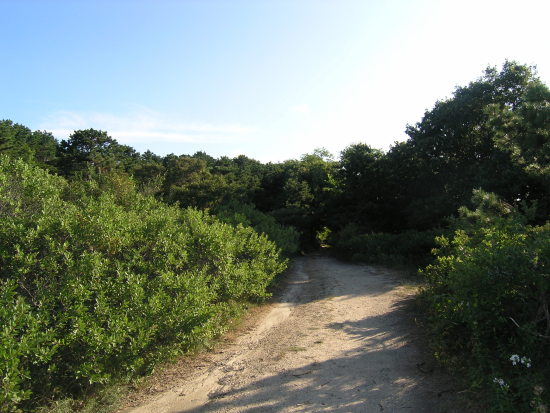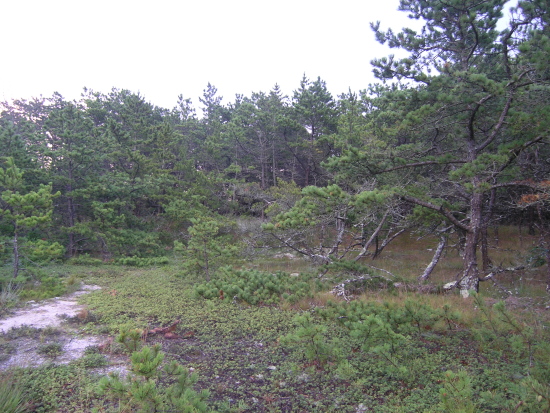Cape Cod may have had a little bit of topsoil long ago, but now the Outer Cape (aka the Lower Cape - north of Chatham) is pretty much all sand (which is why the Indians needed to throw a herring into each hill of corn), and the dominant tree is the Pitch Pine. Where it's subject to wind, it doesn't get much higher than a 6' scrub form.
Here's the path to our not-too-secret wild Blackberry patch, where it's not unusual to see a cheerful Eastern Box Turtle, to hear Bob Whites calling during the day, and Whip-Poor-Wills calling in the evening. Shrubs on front left, Beach Plum. Tree on right, Black Oak. Trees in background, Pitch Pine.

The basic outer Cape upland habitat is now Pitch Pine with an understory of Scrub Oak, with scatterings of Black Oak and feral Black Locust, with grasses below. In sunny spots, Bayberry, Blackberry, Poison Ivy, and Beach Plum. An occasional patch of wild blueberry filled with greedy Robins and Catbirds. This is officially known as Pitch Pine/Scrub Oak Barrens, but, for me, it's heaven. I hope that heaven, if I get there (doubtful) smells like hot sand, Pitch Pine, and Bayberry. The ground cover in the photo below is the dwarf shrub Common Bearberry with its small red berries in August. This was a foggy early morning:


